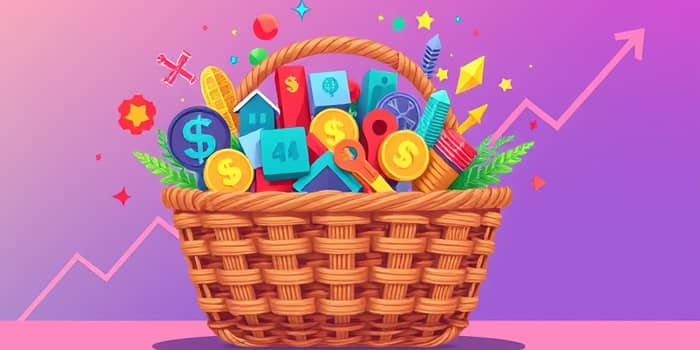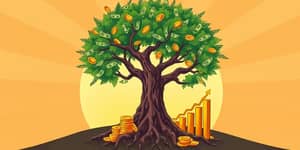Exchange-traded funds, or ETFs, have revolutionized the way individuals and institutions allocate capital. By combining the diversification advantages of mutual funds with the trading flexibility of stocks, ETFs offer an accessible gateway to global markets.
In this comprehensive guide, we will explore the fundamentals of ETFs, practical steps to begin investing, key strategies for beginners, and crucial considerations to build a resilient portfolio. Whether you’re taking your first steps or refining an existing strategy, this article provides clear, actionable insights.
What Is an ETF?
An exchange-traded fund (ETF) is an investment vehicle that holds a basket of securities—stocks, bonds, or commodities—and trades on an exchange just like a stock. ETFs are designed to track an index, sector theme, or investment strategy through a single trade.
Unlike mutual funds, ETFs can be bought and sold throughout the trading day. Their underlying assets are usually disclosed daily, providing unmatched transparency for investors. This structure enables in-kind redemptions, which contribute to their notable tax efficiency compared to mutual funds.
Why Invest in ETFs?
Diversification in one easy transaction is a core appeal. A single ETF can hold hundreds or thousands of securities, reducing company-specific risk dramatically compared to owning individual stocks.
ETFs commonly feature lower expense ratios than many mutual funds, with flagship products charging as little as 0.03% per year. In addition, many brokerages now offer commission-free ETF trades, making cost-effective investing more accessible than ever.
Beyond cost and diversification, ETFs deliver liquidity and flexibility—you can buy or sell at market prices any time the exchange is open. For tax-sensitive investors, the in-kind redemption mechanism often results in fewer capital gains distributions than traditional funds.
How to Start Investing in ETFs
- Open a Brokerage Account: Choose an online broker offering commission-free ETF trades and no minimums. Ensure the platform provides robust research tools and an intuitive interface.
- Select Your Investment Approach: Decide between a self-managed portfolio—where you pick and trade ETFs yourself—or a robo-advisor service, which builds and rebalances an ETF portfolio for an annual fee around 0.25%.
- Screen and Choose ETFs: Use ETF screeners to filter by region, asset class, expense ratio, and performance. Beginners often start with broad-market ETFs, such as S&P 500 or total-world funds.
- Place Orders Strategically: Trade ETFs like stocks, employing market or limit orders. Monitor bid/ask spreads, especially for less liquid funds.
Key ETF Strategies for Beginners
- Single ETF, Global Diversification: A total-world ETF offers exposure to thousands of companies worldwide—sufficient for most entry-level investors.
- The Three-Fund Portfolio: Popularized by Vanguard, it includes a U.S. equity ETF, an international equity ETF, and a broad bond ETF for balanced growth and income.
- Thematic and Sector Investing: For those seeking targeted exposure, thematic ETFs in technology, clean energy, or healthcare can capture high-growth areas but come with increased volatility and concentration risk.
Costs and Fees
While ETFs are renowned for low costs, investors must consider multiple components:
Expense Ratio: The annual management fee, typically ranging from 0.03% to 0.50%. Lower ratios boost net returns over time.
Trading Costs: Many brokers now waive commissions, but bid/ask spreads can vary. Highly liquid ETFs tend to have tight spreads, minimizing trading friction.
Total Cost of Ownership: Combine expense ratios, any platform fees, and incidental trading costs. Watch out for “fund of funds” structures that may introduce double-layered fees.
Risks of ETF Investing
No investment is risk-free. ETFs carry market risk: the value fluctuates with underlying assets. Less liquid or niche funds can exhibit wider bid/ask spreads and higher trading impact.
Tracking Error—the divergence between ETF performance and its benchmark—can erode returns. Additionally, thematic or sector-specific ETFs may suffer from concentration risk if a small group of assets dominates performance.
Diversification and asset allocation can mitigate, but not eliminate, these risks. Investors must align ETF choices with their risk tolerance and time horizon.
Numbers, Stats, and Trends
ETF adoption has grown exponentially. As of mid-2025, global ETF assets exceed tens of trillions of dollars, with retail and institutional investors embracing low-cost, transparent products.
Many brokers now permit fractional share purchases, enabling investments as low as $1 or comparable. Leading broad-market ETFs like Vanguard S&P 500 ETF (VOO) and iShares Core S&P 500 ETF (IVV) both maintain ultra-low expense ratios of 0.03%–0.04%.
Specialized segments—such as clean energy, frontier markets, and factor-based ETFs—have seen increased inflows, reflecting investor appetite for targeted exposures within a diversified framework.
How Many ETFs Do You Need?
For most beginners, a single total-market or all-world ETF can suffice—a true set-and-forget investment solution. Investors seeking more control may allocate across multiple ETFs for stock/bond balance or thematic tilts.
Ultimately, the number of ETFs should reflect personal goals, risk tolerance, and desired engagement level. A simplified approach reduces complexity and promotes consistency.
Evaluating ETFs Before Investing
- Index Methodology: Understand the rules governing the benchmark. Is it market-cap weighted, equal-weighted, or factor-based?
- Liquidity and Assets Under Management: Larger, more traded ETFs typically have tighter spreads and lower closure risk.
- Fund Age and Track Record: Established funds offer more reliable performance histories.
- Diversification Profile: Review holdings count and sector breakdown to gauge concentration.
Portfolio Implementation Examples
A set-and-forget global ETF strategy may involve just one fund like a total-world equity ETF. For more nuance, a three-fund portfolio balances U.S. stocks, international equities, and bonds in desired weightings.
Active allocation investors can blend sector ETFs—technology, healthcare, clean energy—or factor-based funds—value, momentum, dividend growth—to tailor exposure to market trends and personal convictions.
Additional Considerations
Robo-advisors offer fully automated ETF-based portfolios with regular rebalancing and tax-loss harvesting for an annual fee around 0.25%. This hands-off model suits investors looking for professional portfolio management at low cost.
Tax efficiency is a hallmark of ETFs, but investors must still account for dividend withholding and capital gains distributions according to their local regulations. Finally, ensure regulatory oversight and daily holdings disclosures align with your jurisdiction’s standards.
By mastering these essentials—fundamentals, strategies, costs, and risks—you can harness the power of ETFs to build a diversified, cost-effective, and resilient investment portfolio. Start small, stay consistent, and let the compounding potential of diversified markets work in your favor.
References
- https://www.justetf.com/en/academy/etf-for-beginners.html
- https://www.nerdwallet.com/article/investing/how-to-invest-in-etf-exchange-traded-fund
- https://www.blackrock.com/ae/intermediaries/etfs-and-investing/what-is-an-etf
- https://www.youtube.com/watch?v=yjbvt5q-Low
- https://www.morningstar.com/funds/morningstars-guide-etf-investing
- https://www.ally.com/stories/invest/etfs-for-beginners/
- https://www.fidelity.com/learning-center/investment-products/etf/etfs
- https://investor.vanguard.com/investor-resources-education/article/how-to-start-investing










